×


We have detected your country as:
Please click here to go to the USA website or select another country from the dropdown list.
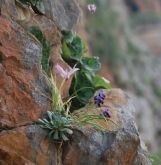 Scenery, archaeology, photography, hiking and climbing make Arbel a popular destination. The top is accessible by car or by hiking trail. A hike to the top of Mount Arbel from the south is included in the Israel National Trail, and an approach from the west is part of the Jesus Trail that runs from Nazareth to the Sea of Galilee. There are six touring routes at Arbel National Park that range from a leisurely stroll to the Carob Lookout to three-hour treks and climbs.
Scenery, archaeology, photography, hiking and climbing make Arbel a popular destination. The top is accessible by car or by hiking trail. A hike to the top of Mount Arbel from the south is included in the Israel National Trail, and an approach from the west is part of the Jesus Trail that runs from Nazareth to the Sea of Galilee. There are six touring routes at Arbel National Park that range from a leisurely stroll to the Carob Lookout to three-hour treks and climbs.
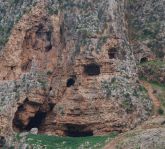 The Cave Fortress is made up of a cluster of eight cave complexes. The multi-level cliff caves were suitable for habitation, including a water system and ritual immersion baths. Experienced hikers will enjoy the loop trail, which includes a steep descent down rock-hewn steps. Cables and hand- and foot-holds are built into the cliff. Previous climbing experience is not necessary in order to handle the route.
The Cave Fortress is made up of a cluster of eight cave complexes. The multi-level cliff caves were suitable for habitation, including a water system and ritual immersion baths. Experienced hikers will enjoy the loop trail, which includes a steep descent down rock-hewn steps. Cables and hand- and foot-holds are built into the cliff. Previous climbing experience is not necessary in order to handle the route.
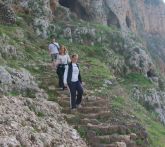 Many battles and events have taken place in the Arbel area. Josephus, the historian from the Roman period, tells of one battle between Herod the Great and the Galilean Zealots who barricaded themselves at Arbel in 37 BC. According to a brochure produced by the Israel National Parks: “Herod overcame the rebels only after he had the best of his warriors lowered to the caves in cages suspended by ropes, from which the Zealots became convenient targets for their fiery brands and arrows. The Zealots fought to the death; Josephus describes one old man who, rather than surrender, closed his ears to the screams of his wife and his seven sons, killed them and threw them into the gorge, jumping after them to his own death.” Many other battles took place from this location throughout the years, with the last significant one being in AD 67.
Many battles and events have taken place in the Arbel area. Josephus, the historian from the Roman period, tells of one battle between Herod the Great and the Galilean Zealots who barricaded themselves at Arbel in 37 BC. According to a brochure produced by the Israel National Parks: “Herod overcame the rebels only after he had the best of his warriors lowered to the caves in cages suspended by ropes, from which the Zealots became convenient targets for their fiery brands and arrows. The Zealots fought to the death; Josephus describes one old man who, rather than surrender, closed his ears to the screams of his wife and his seven sons, killed them and threw them into the gorge, jumping after them to his own death.” Many other battles took place from this location throughout the years, with the last significant one being in AD 67.
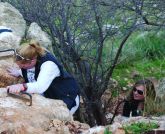 The area is noteworthy to Christians because Yeshua (Jesus) performed most of his ministry and miracles in the Valley of Ginnosar at the foot of Arbel. Yeshua, disciples and followers moved between Capernaum and Migdal while He lived in the Galilee area. Arbel is not specifically mentioned in the writings of the Apostles, even though many events took place in the area. However, Hosea 10:14 could be a reference to Mount Arbel: “Therefore tumult shall arise among your people, and all your fortresses shall be plundered as Shalman plundered Beth Arbel in the day of battle—a mother dashed in pieces upon her children.” This tragedy likely would have occurred on the cliffs of Arbel.
The area is noteworthy to Christians because Yeshua (Jesus) performed most of his ministry and miracles in the Valley of Ginnosar at the foot of Arbel. Yeshua, disciples and followers moved between Capernaum and Migdal while He lived in the Galilee area. Arbel is not specifically mentioned in the writings of the Apostles, even though many events took place in the area. However, Hosea 10:14 could be a reference to Mount Arbel: “Therefore tumult shall arise among your people, and all your fortresses shall be plundered as Shalman plundered Beth Arbel in the day of battle—a mother dashed in pieces upon her children.” This tragedy likely would have occurred on the cliffs of Arbel.
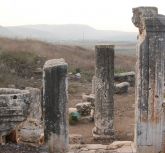 Arbel was an affluent town with a grand synagogue. Remains of the magnificent ancient synagogue were first discovered in 1852 by Edward Robinson, explorer and biblical scholar. Robinson is most famous for his work in 1838 when he identified the remains of the massive stone arch that once stood at the southwestern corner of the Herodian Temple Mount in Jerusalem, later known as the Robinson Arch.
Arbel was an affluent town with a grand synagogue. Remains of the magnificent ancient synagogue were first discovered in 1852 by Edward Robinson, explorer and biblical scholar. Robinson is most famous for his work in 1838 when he identified the remains of the massive stone arch that once stood at the southwestern corner of the Herodian Temple Mount in Jerusalem, later known as the Robinson Arch.
The synagogue was built from large limestone blocks without mortar. It stood out against the homes of the ancient village, which were built out of black basalt rocks, the rock most common in the region. Scholars conclude that it was built in the fourth century AD and believed to have continued in use until the eighth century AD.
If you have an opportunity to do some sightseeing in Israel, the Arbel National Park will not disappoint.
Source: By Joanne Gosselin, BFP Staff Writer
Photo Credit: Daniel Kirchhevel
All logos and trademarks in this site are property of their respective owner. All other materials are property of Bridges for Peace. Copyright © 2025.
Website Site Design by J-Town Internet Services Ltd. - Based in Jerusalem and Serving the World.